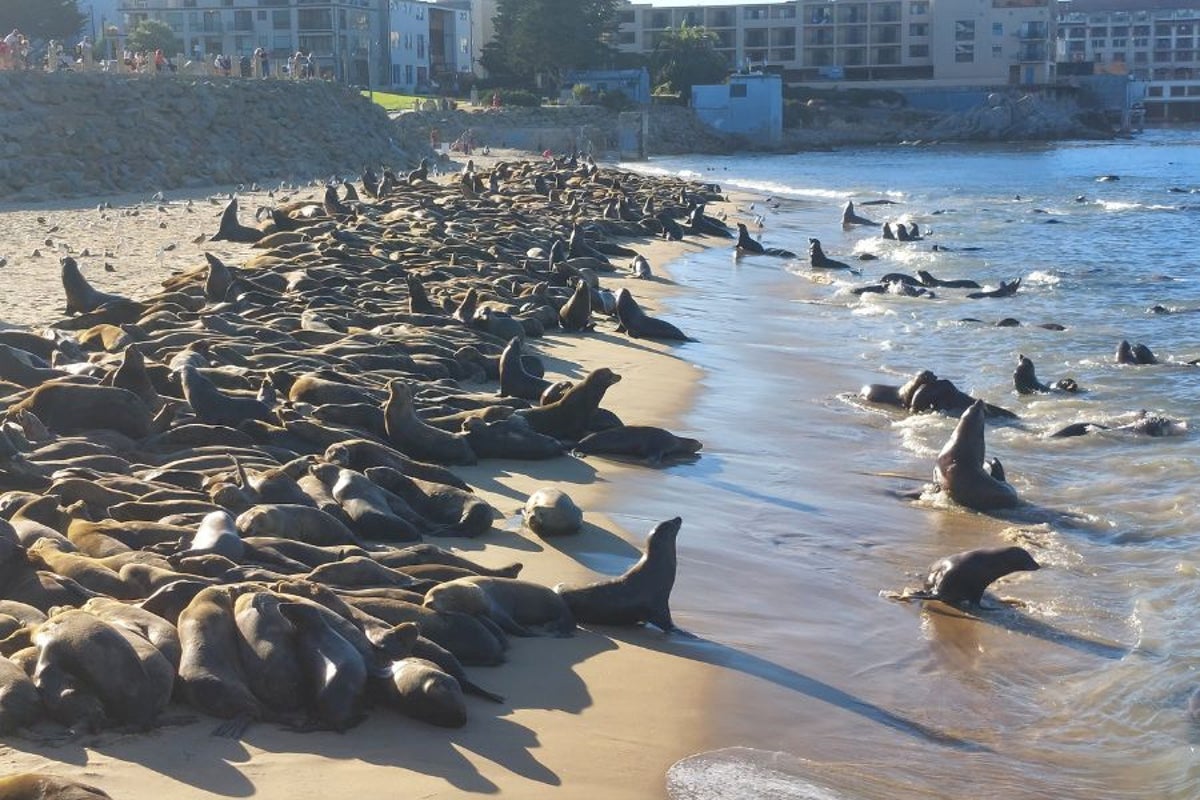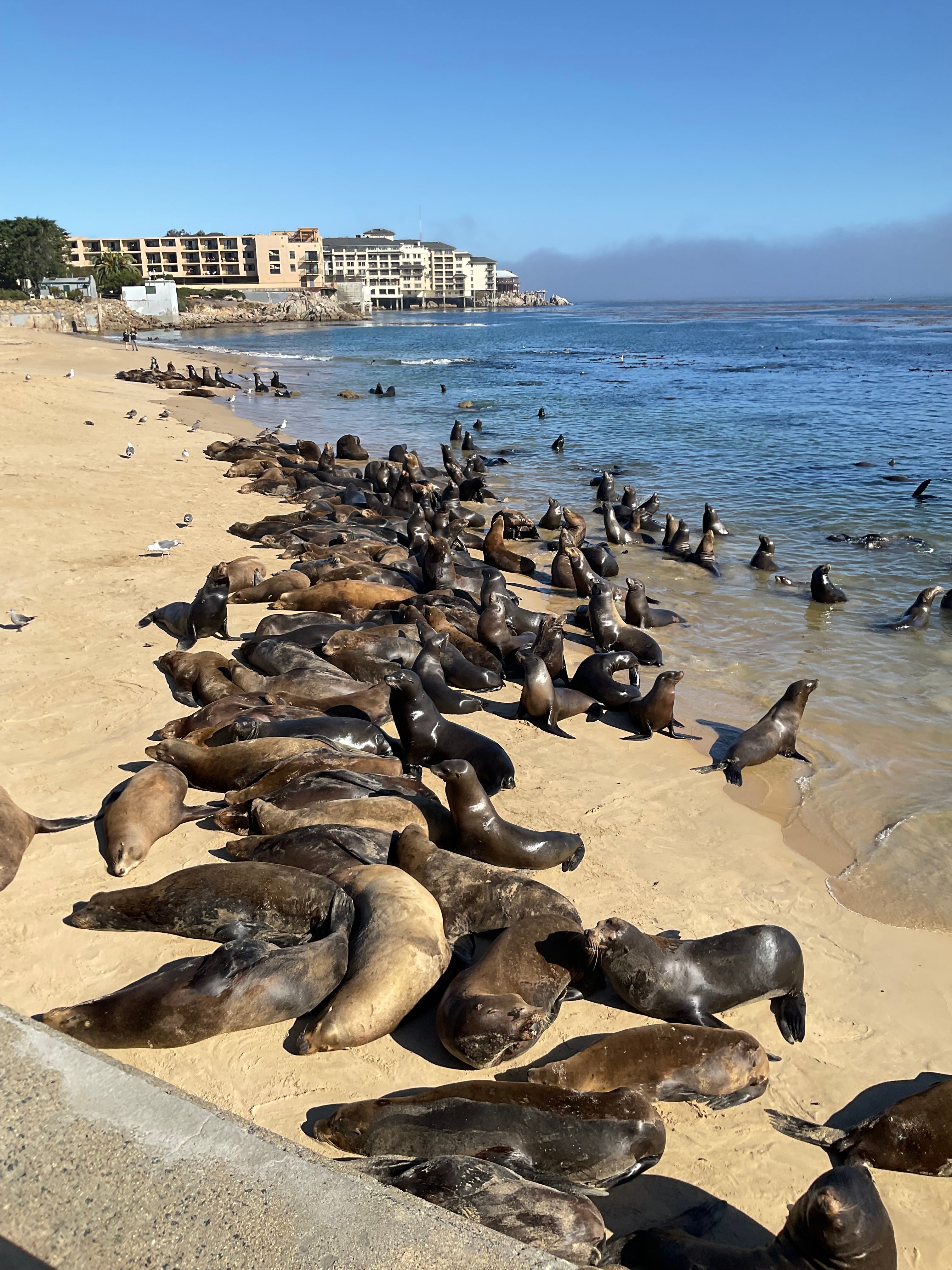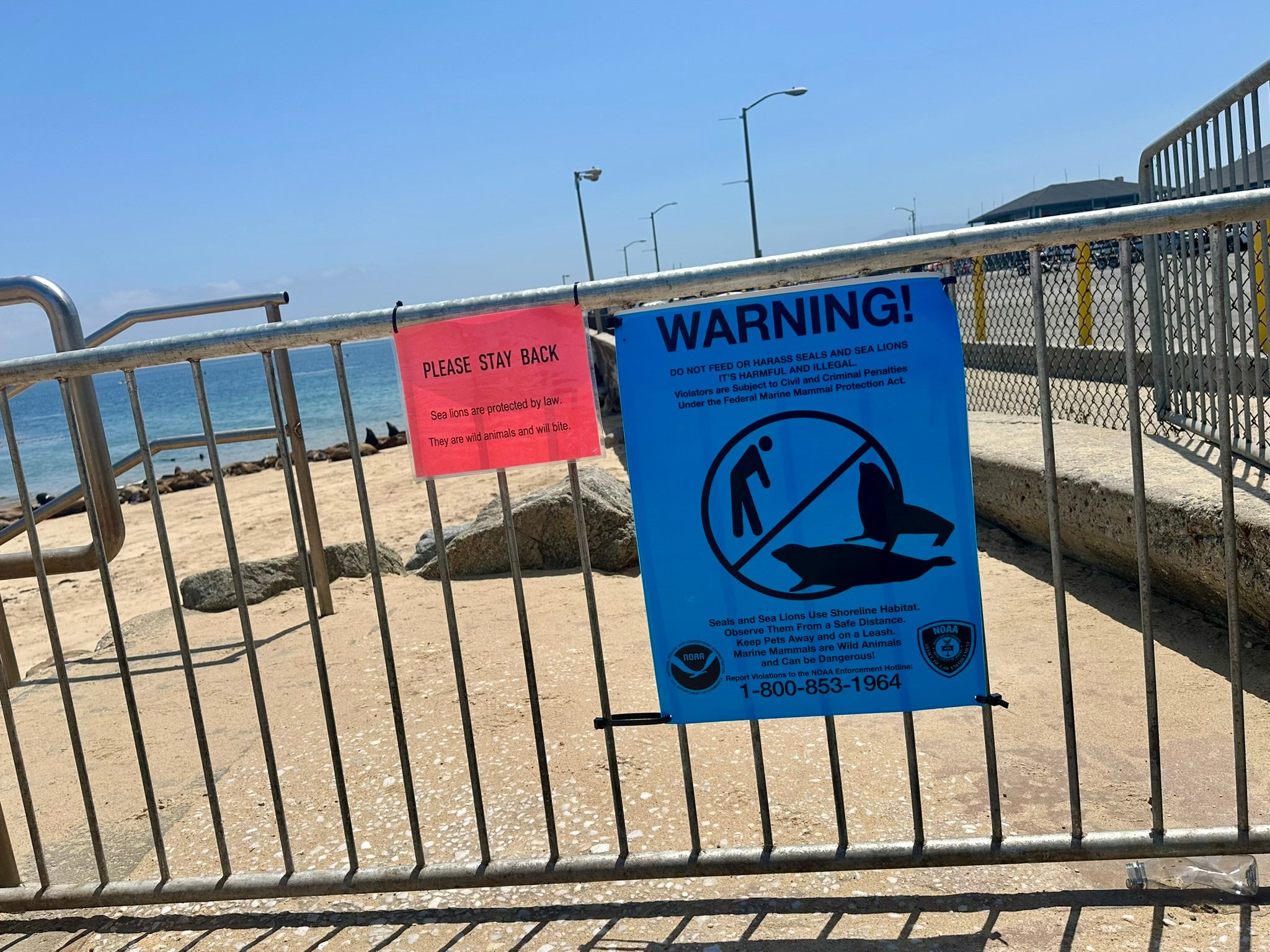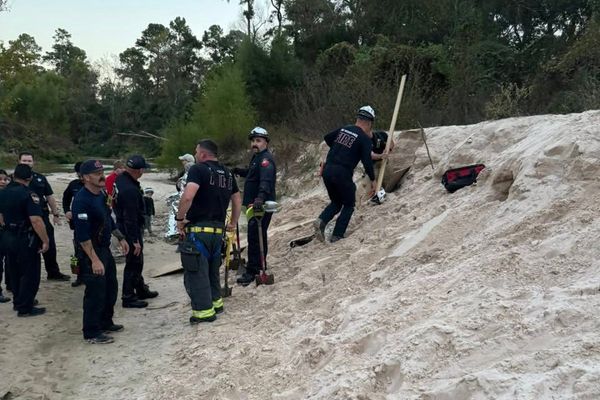
These ocean mammals are flipping out over a popular California beach in such large numbers that a city on the Pacific has been forced to close it to visitors.
San Carlos Beach in Monterey told visitors to temporarily stay away on Thursday after it was overtaken by a colony of sea lions.
The City of Monterey shared a photo of the animals on social media, alerting the public that Parks and Recreation staff are actively monitoring the situation at San Carlos Beach as well as Sister City Park, located along the popular Recreation Trail between Fisherman’s Wharf and Cannery Row.
City spokesperson Laurie Huelga told The Independent on Thursday that around 4:40 p.m., about 60 to 70 sea lions were occupying the beach.
The city is working closely with the Monterey Bay National Marine Sanctuary and other community partners to track the activity of the animals and provide updates on access to both locations.
Officials are reminding the public to keep a safe distance of at least 50 yards, or half the length of a football field, from the sea lions while enjoying the coastline.
“We want residents and visitors to be safe while visiting the coastline,” the city said in a statement.
The notice also states that marine mammals, including sea lions, are protected under the Marine Mammal Protection Act. Harassing, feeding, capturing, or killing these animals is against federal law and could result in fines or jail time.
San Carlos Beach was also closed on June 4 due to the sea lions. City leaders are encouraging the community to enjoy the sight of the sea lions responsibly, while remembering that humans share the shoreline with other species.

A spokesperson for The Marine Mammal Center told The Independent that the coastline of Monterey from Old Fisherman’s Wharf along the recreational trail to San Carlos Beach sees a surge of California sea lions each summer, often numbering in the hundreds.
Last year, about 20 sea lions appeared at San Carlos Beach. About a week later, there were hundreds, KSBW reported.
The TMMC official explained that subadult and adult males return to central and northern California during this time to rest and feed in the nutrient-rich waters of the Monterey Bay National Marine Sanctuary.

Many of these males return from the species’ main rookery in the Channel Islands off southern California, where they search for mates. Their stay in Monterey can vary from year to year, often depending on shifts in local food supplies, since sea lions are opportunistic feeders drawn to the area’s wide range of foraging options.
The spokesperson added that the waterfront also provides ideal haul-out spots, with flat beachheads, such as Santa Rosalia Beach at Monterey Harbor, that offer easy access to the bay, as well as cliffsides that give the animals a measure of seclusion.







